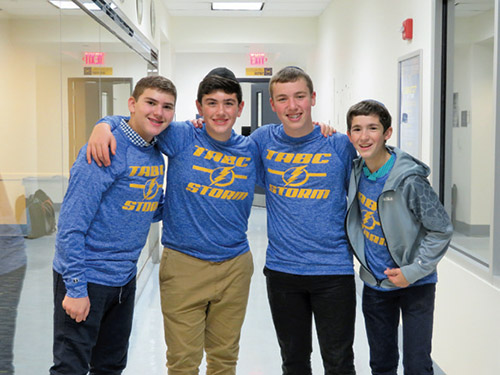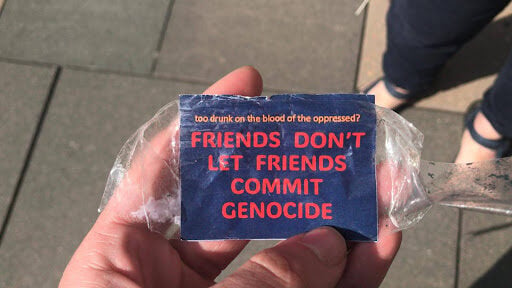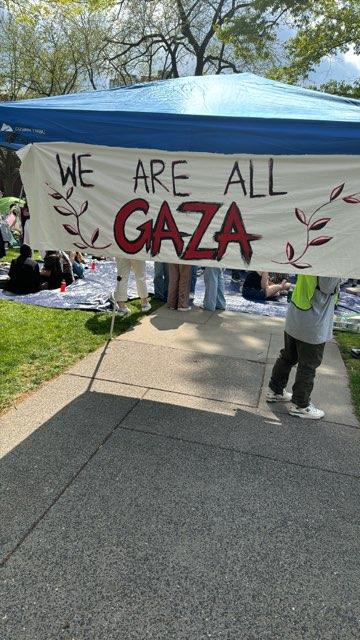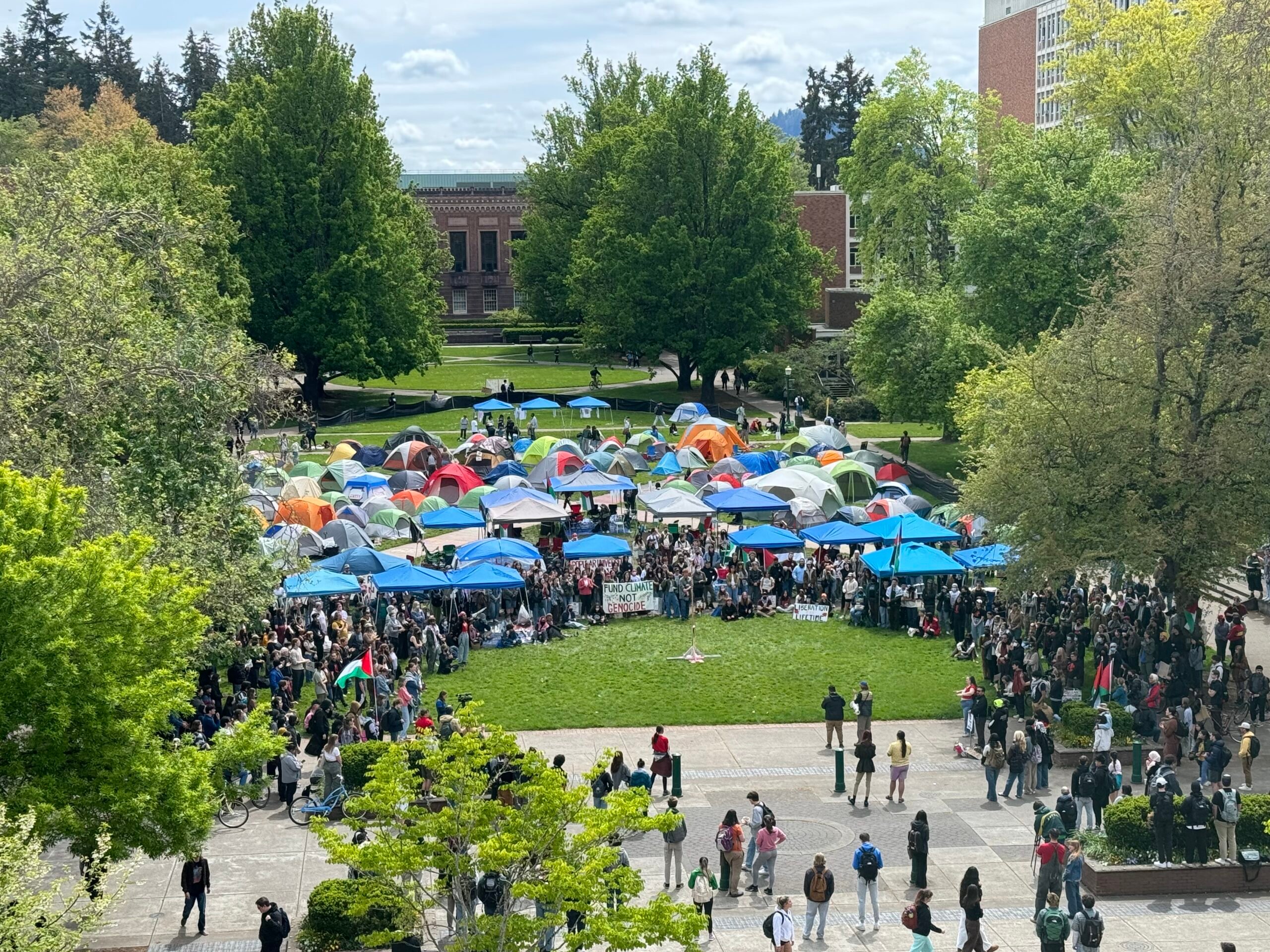



There was a mosh pit on Monday night, but it wasn’t at the game.
Forty-five minutes before tip-off, scores of teenage boys converged together to a single spot. They pushed against each other to get closer to the action, jumping up and down in the heat of the moment, shouting raucously at the top of their lungs:
“Matthew, Matthew!”
“Shai, Shai!”
These were the names of their classmates, their friends, and the shouters were cheering for them to do their jobs as well and as quickly as humanly possible.
But Matthew and Shai were no ordinary sports players, and their job was no typical competition.
They were handing out T-shirts.
Most were blue. Others were yellow.
The excitement raged on, and those who managed to emerge with a shirt in hand, holding it high like a trophy, felt as though they had just won a championship for their team (especially if the shirt was the correct size).
This was an exciting night, but even more importantly, it brought the whole school together.
The shirt-wearers journeyed outside, where friends, illuminated by flames and phone flashlights, barbecued hot dogs and hamburgers in the parking lot. Israeli music blasted from a portable speaker as they ate underneath the moon, and there could be no doubt—this was TABC, and this was basketball opening night.
As the fans filed into the gym, players from TABC and visiting Waterbury Yeshiva warmed up by running, shooting and passing balls around the court in well-practiced, beautifully chaotic patterns. Everyone rose for Dovid Pearlman’s renditions of the national anthems of the United States and Israel, and the teams began to play.
The game itself went back and forth, with good plays and bad plays and good calls and bad calls, depending on who you ask. But the real tone-setter was the cheers from the TABC stands. There were of course the conventional chants of “Let’s Go Storm!” on offense, “Defense, Defense!” on defense, “You Can’t Do That!” following Waterbury fouls, and “Whoosh!” after successful foul shots. But because this was TABC, those cheers were interspersed with Shabbat-table niggunim, giving the impression that the basketball game was actually a well-attended, high-energy Friday-night tisch.
Another highlight was the halftime show. Ten TABC boys of various sizes encased their upper bodies in inflatable plastic spheres and proceeded to “play soccer” for the next ten minutes.
This was no conventional game of soccer, though, because no bubble-protected player would be hurt if he fell down. Or was knocked over by another player. Or was knocked over by a fan standing on the sidelines who decided to get in on the action.
Suffice to say, there were soccer nets and a soccer ball, but goal-scoring was not the primary mission of either team. A senior who played in the game agreed: “Even though we were supposed to be playing soccer, it evolved into ramming into each other, which was much more fun. Especially because no one was getting hurt.”
Bubble soccer was so exciting that the third quarter of the basketball game was drab by comparison. Although TABC began to pull ahead of Waterbury, cheering from the bleachers was more subdued than it had been in the first half.
This was a problem TABC senior Zevi Bin-Nun was determined to correct. Prior to the fourth quarter, he summoned the fans to the court, where they clustered around him like iron filings around a magnet.
“This is our house!” Bin-Nun bellowed with obvious passion. “We started out strong, and now we need to finish strong! Let’s go Storm!”
“Let’s go Storm!” the crowd thundered.
The fourth and final quarter saw renewed enthusiasm among the blue-shirted fans as their friends and classmates on the court salted away the time remaining. In the end, TABC won the game, and the night’s extensive festivities were validated.
But even if TABC had not won the game, the purpose of the night would not have been lost.
When the fans cheered for their teams, they felt the same emotional highs, lows and post-game cathartic relief that the players felt. The high-energy framework of a sports game, even a high-school yeshiva-league game, creates a strong empathic bond between fans and players of the same team, a bond that can bring a school together by saying, “We’re all in this together.”
But no psychology is required to see that this bond between players, fans, classmates and friends is more powerful and significant than the score of any game, as anyone who witnessed the wall of blue shirts cheering in unity will attest.
By Tani Greengart
Tani Greengart is a current senior at TABC, a former intern at the Jewish Link and editor-in-chief of Kol Torah.












